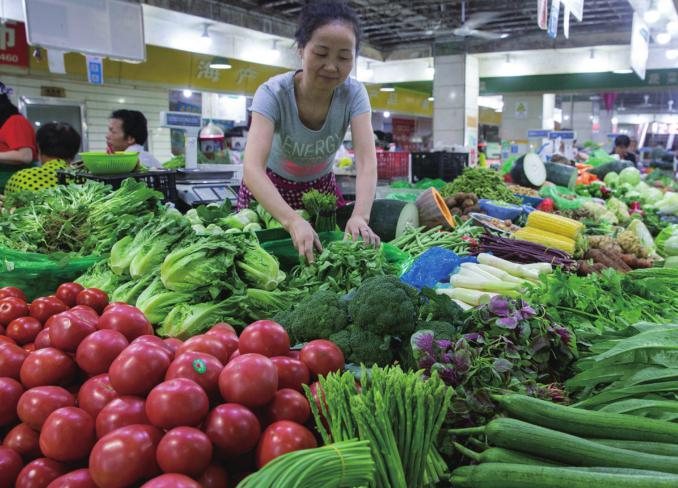Consumer Inflation Holds Steady,Factory Prices Further Soften

Chinas consumer infl ation held steady in October, data showed on November 9, but factory gate inflation continued to cool, which analysts said created room for policymakers to maneuver.
The consumer price index (CPI), a main gauge of inflation, rose 2.5 percent year on year in October, unchanged from that in September, ending a four-month rising streak, according to data from the National Bureau of Statistics (NBS).
The reading was the second highest of the year, buoyed by an increase in non-food prices, the growth of which accelerated to 2.4 percent in October from 2.2 percent in September.
The rise led to a CPI increase of 2.1 percent for the fi rst 10 months of the year, well below the governments target ceiling of 3 percent for 2018.
NBS official Sheng Guoqing attributed the stable CPI increase to softening food prices, which dipped 0.3 percent month on month in October.
Prices of fresh vegetables and eggs fell 3.5 percent and 4 percent, respectively, on a monthly basis due to increasing supplies. Prices of pork and fresh fruits, however, rose notably by 1 percent and 1.9 percent, respectively.
The moderation of food prices, driven by falling vegetable prices, fully offset the rise in non-food prices, said Lu Ting, an economist with financial services group Nomura.
The NBS data also showed the CPI edged up 0.2 percent month on month in October.
Lu expected a modest rise in Chinas annual CPI to 2.1 percent in 2018, up from 1.6 percent in 2017, saying contained infl ation will not affect the governments policyeasing agenda.
The growth of the producer price index(PPI), which measures costs for goods at the factory gate, trended down again in October to 3.3 percent from 3.6 percent in September. The growth rate has dropped for four consecutive months.
Overall, the PPI rose 3.9 percent year on year in the fi rst 10 months of the year, while on a month-on-month basis, it was up 0.4 percent in October.
Sheng said the carryover effect contributed 1.2 percentage points to the PPI growth, while new factors contributed 2.1 percentage points.
The continued fall of PPI growth was due to a high base last year and continued weakness in domestic demand, Lu said, adding that the downward trend of PPI growth is expected to continue but in a more moderate way through the winter.
The inflation data came after a slew of indicators showed expansion of manufacturing activity slowing in October, but imports and exports posted stronger-thanexpected growth.
On November 8, Premier Li Keqiang warned of a new downward pressure on the economy amid complicated domestic and foreign circumstances and called for more efforts to maintain stable performance and healthy development of the economy.
In the third quarter, the economy expanded 6.5 percent, down from 6.7 percent in the second quarter but in line with the governments annual target.
To boost domestic demand, China has unveiled a host of measures, including a 1-percentage-point cut in reserves that commercial banks must set aside at the central bank, increased fi scal spending and stepped up financial support for private businesses and small and medium-sized enterprises. Also, it will continue to implement proactive fiscal policy and prudent monetary policy.
In a research report issued on November 9, Goldman Sachs expected the Chinese Governments monetary policy to continue to support growth.

